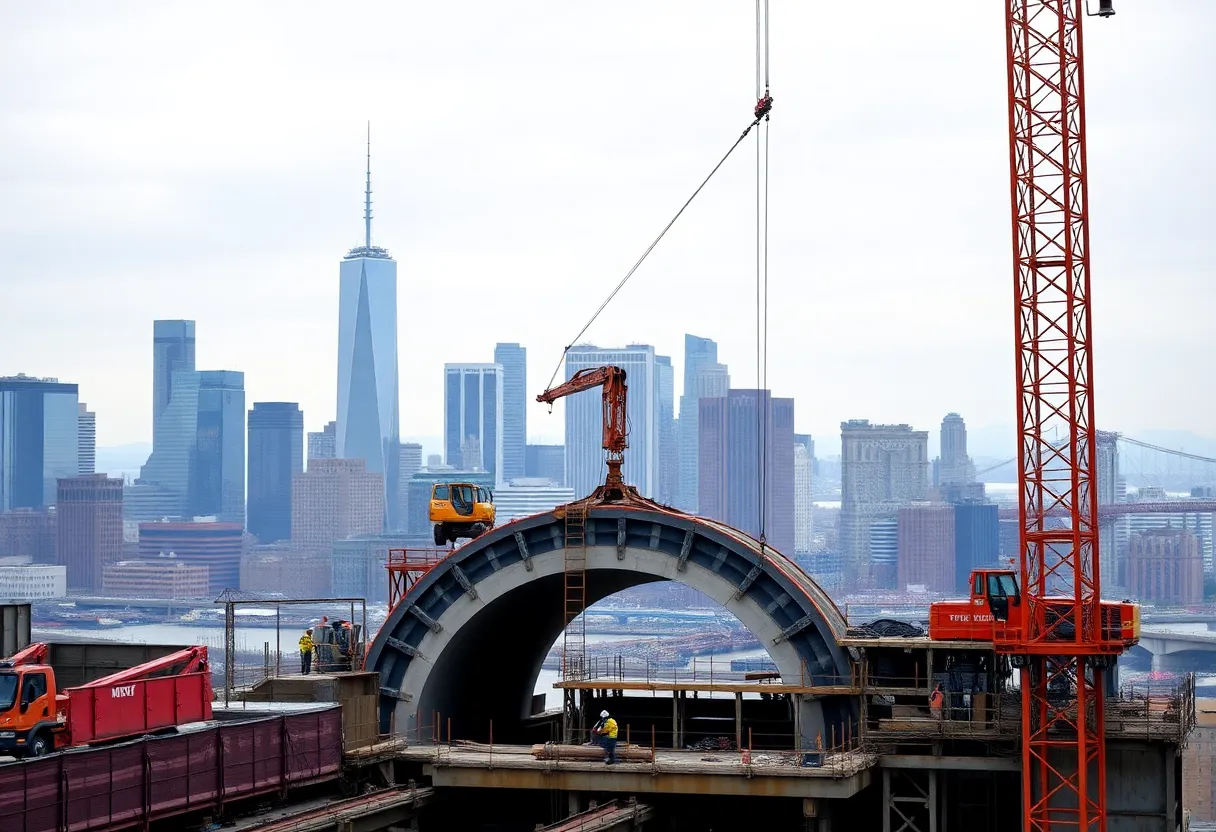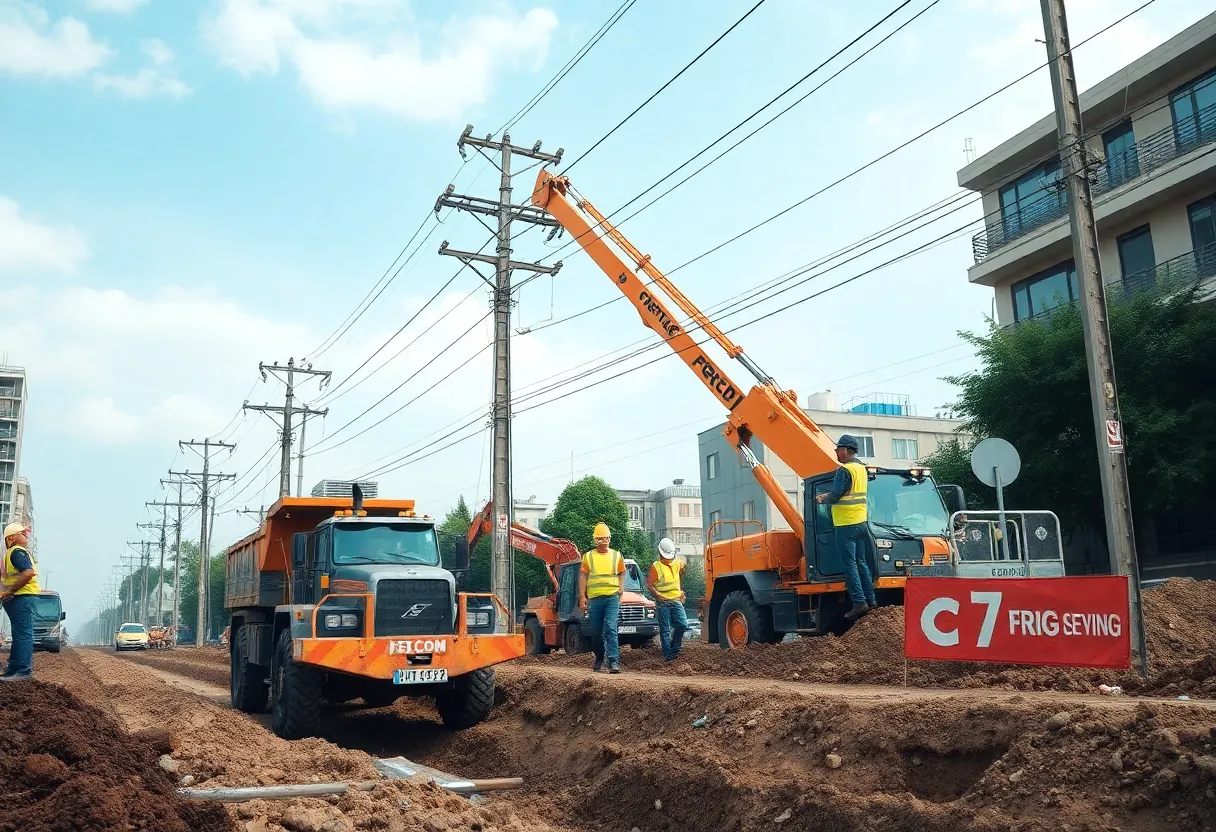News Summary
The cold storage sector is experiencing significant growth in New York, driven by the surge in e-commerce grocery and pharmaceutical distribution. As demand for temperature-controlled warehousing escalates, U.S. cold storage construction is projected to reach $18.6 billion by 2027, with an annual growth rate of nearly 14%. Investors are increasingly targeting cold storage assets, highlighting its importance in the real estate market. While challenges exist, including design complexity and zoning issues, the potential for long-term leases and sustainable technologies points towards a promising future for cold storage development.
Cold Storage Development Thrives in New York Amid Growing Demand for Temperature-Controlled Warehousing
The cold storage sector is currently one of the most sought-after opportunities in the commercial real estate market, driven by remarkable growth in e-commerce grocery, pharmaceutical distribution, and fresh food logistics. As demand for temperature-controlled warehousing continues to escalate, U.S. cold storage construction is projected to reach $18.6 billion by 2027, with an impressive annual growth rate of nearly 14%.
Rising Consumer Trends Foster Expansion
In recent years, the online grocery shopping trend has significantly increased, with projections indicating that it will account for 21.5% of U.S. grocery sales by 2025, a notable increase from 13% in 2021. Furthermore, e-commerce sales in refrigerated and frozen food categories soared by 58% year-over-year in 2021, solidifying the demand for cold storage solutions.
Currently, the U.S. cold storage real estate market comprises over 214 million square feet of space, boasting vacancy rates below 4%. A recent survey revealed that 40% of investors are now targeting cold storage assets, highlighting an increase from just 7% in 2019.
Growth Hotspots and Development Challenges
Cold storage developers are focusing on sites near population centers and logistics corridors for optimal growth potential. Areas such as Long Island, Westchester County, and the Hudson Valley are emerging as prime targets due to their proximity to dense urban markets, ports, and increasing residential populations. There are over 18 million square feet of warehouse space proposed in Long Island, with 7 million square feet planned for Brookhaven alone.
Despite its robust growth, cold storage development faces challenges. Developers must contend with complex design, construction, and operation requirements. Facilities typically need high clear heights (often exceeding 50 feet), reinforced slabs, automation infrastructure, backup power, and specialized climate control systems. These specifications can elevate construction costs ranging from $175 to $300 per square foot, depending on the cooling or freezing needs.
Long-Term Leases and Sustainable Technologies
Cold storage leases generally span long terms of 15–30 years, which are stable across economic cycles. Moreover, these leases tend to yield higher returns compared to conventional warehouses. It is worth noting, though, that nearly 80% of existing U.S. cold storage was built before 2000, often lacking modern features such as adequate ceiling heights and energy efficiency.
Energy consumption is another critical concern for cold storage facilities, as they can account for 25% or more of operating expenses. However, advancements in technologies like transcritical CO2 refrigeration, solar panels, and efficient envelope assemblies can help reduce these costs.
The Role of Pre-Leasing and Community Engagement
Pre-leasing is essential for financing cold storage projects, as lenders remain hesitant to finance developments without committed tenants. In addition, developers often encounter zoning challenges, especially in Westchester and the Hudson Valley, where areas may lack necessary classifications for distribution centers.
Community engagement plays a vital role in the success of cold storage developments, as negotiations are often needed for approvals due to local zoning codes. With towns like Brookhaven and Riverhead enacting moratoriums on warehouse projects exceeding 100,000 square feet due to concerns regarding overdevelopment, developers must navigate these challenges effectively.
Tax Benefits and Future Prospects
Cold storage is primarily tenant-driven, offering tax benefits that can help reduce vacancies in the market. Despite inherent challenges, the future of cold storage development in New York is promising. The combination of growing demand, investor interest, and crucial community engagement, along with a tailored legal strategy, will be pivotal for developers aiming to thrive in this competitive landscape.
Deeper Dive: News & Info About This Topic
Construction NY Resources
Additional Resources
- Long Island Press: Cold Storage Development Heats Up in NY Region
- Wikipedia: Cold Storage
- AJOT: Leonard’s Express Recognized with Top 3PL Cold Storage Provider Award
- Google Search: Cold Storage
- Connect CRE: Premier Design & Build Launches Cold Storage Warehouse on Long Island
- Encyclopedia Britannica: Cold Storage
- FleetOwner: Agile Cold Breaks Ground in New York
- Google News: Cold Storage Logistics
Author: Construction NY News
The NEW YORK STAFF WRITER represents the experienced team at constructionnynews.com, your go-to source for actionable local news and information in New York and beyond. Specializing in "news you can use," we cover essential topics like product reviews for personal and business needs, local business directories, politics, real estate trends, neighborhood insights, and state news affecting the area—with deep expertise drawn from years of dedicated reporting and strong community input, including local press releases and business updates. We deliver top reporting on high-value events such as the New York Build Expo, infrastructure breakthroughs, and cutting-edge construction technology showcases. Our coverage extends to key organizations like the Associated General Contractors of New York State and the Building Trades Employers' Association, plus leading businesses in construction and real estate that power the local economy such as Turner Construction Company and CMiC Global. As part of the broader network, including constructioncanews.com, constructiontxnews.com, and constructionflnews.com, we provide comprehensive, credible insights into the dynamic construction landscape across multiple states.





